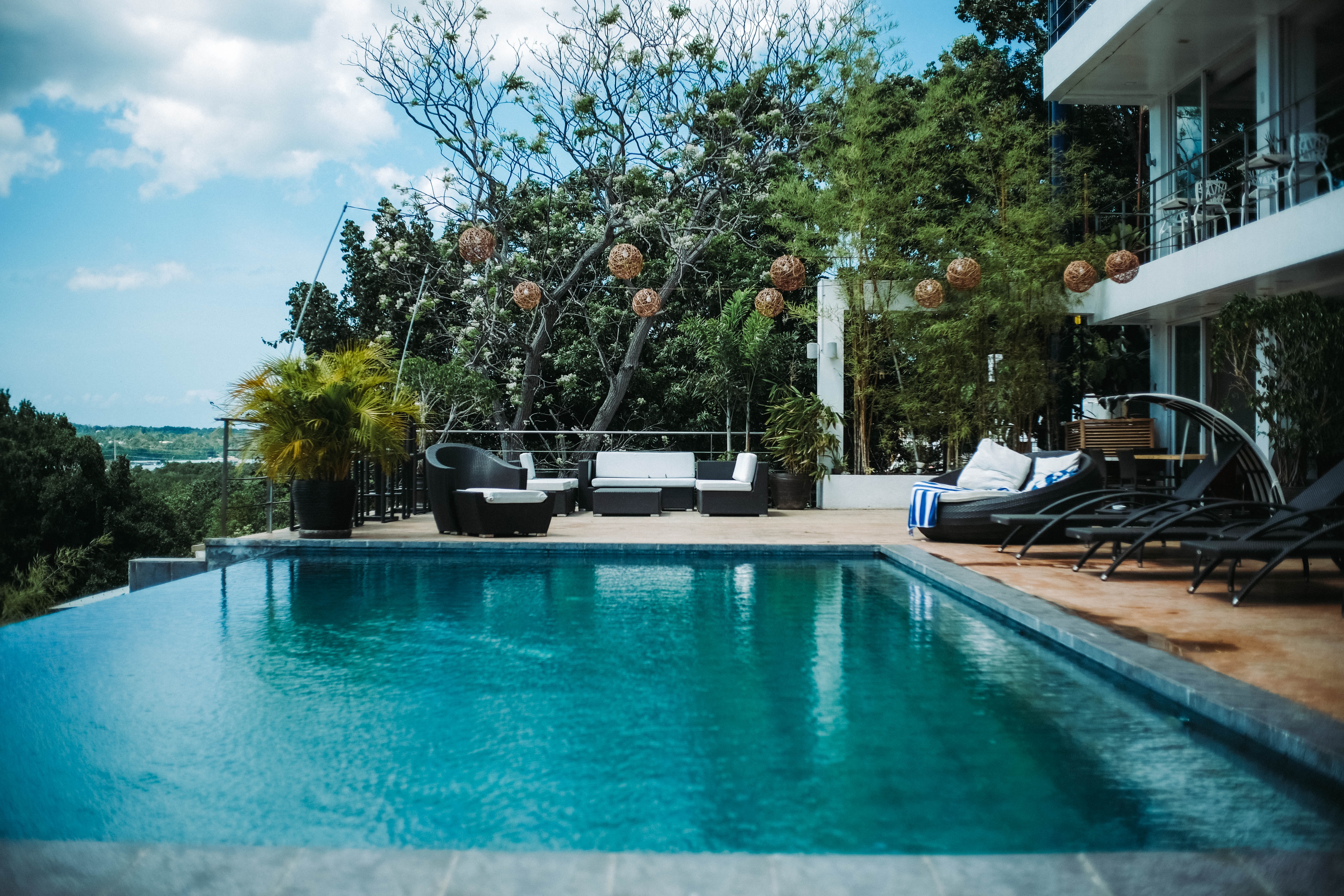If you’re considering adding a swimming pool to your home, partnering with an architect is a great way to ensure that your pool meets all your requirements, looks great and adds value to your property.
Swimming pool design and installation steps
Here’s a rough outline of the steps required to take your pool from a dream into a reality.
-
Concept
-
Design specification
-
Planning permission
-
Measurement
-
Excavation
-
Preparation of subsoil to settle the pool
-
Placing the pool structure
-
Installation of pumps, filters, heaters, lights, etc.
-
Tiling around the pool
Of course, each pool is different, so the process may differ slightly. Fortunately, an experienced architect knows exactly what needs to be done and when.
What to consider when designing your swimming pool
First of all, it’s important to figure out exactly what you want, and where you’re going to put it.
While you might already have an idea of what you’d like, hiring an architect to design your pool and oversee construction means that all necessary considerations will be taken into account from the very beginning of the project.
Here are some key considerations when deciding on the final design of your pool.
Intended use
Before getting bogged down in the details, you first need to consider the intended use of the pool. This will help to determine its size, shape, location, material and any additional features.
If you’re just looking for somewhere to take a quick dip or relax, you probably don’t need a full-size swimming pool. A plunge pool or even a hot tub may suit your needs.
In contrast, if you plan to use your pool for swimming and exercise, you should consider a larger pool or, where space is tight, a smaller pool with a water jet that allows you to swim in place against a current.
Indoor or outdoor
Your choice of an indoor or outdoor pool might be predetermined by the space you have available, the weather, or the landscape of your property. Whichever you choose, a south-facing pool is the best option to make the most of the sunshine.
Outdoor pools offer a wonderful place to relax and cool down in the summer but they can require a lot of cleaning and maintenance. Indoor pools are much more versatile, as they can be used in any weather, but they have higher construction and running costs.
Planning permission
It’s highly likely that you will require planning permission for your pool, and these restrictions may determine the location and size of your pool.
It’s essential that you get the correct permissions before commencing construction, otherwise you could face a hefty fine. As the project lead, this is something that your architect will take care of for you, so you don’t need to worry about it.
Pool construction
Pools can be made from a variety of materials, each with their own benefits in terms of durability, aesthetics and price.
Tiled or ceramic pools are very durable and look great, but they can be costly. Block and liner pools are a cheaper alternative but they pose a puncture risk, while concrete pools are quick and easy to manufacture but require a lot of maintenance.
Whether you choose a sloped or flat-bottomed pool may also affect the choice of construction material, as they require different installation techniques.
See your pool design in virtual reality
If you choose to work with Design Haus on your swimming pool construction project, you will be able to see exactly what your pool will look like in situ using state-of-the-art virtual reality.
You can walk around with the environment to see how different materials and lighting solutions affect the final look and feel. I can even show you how your pool will look at different times of day and in changing weather conditions, so you can experience everything except the feel of the water on your skin.
To find out more about how I can support your swimming pool construction project, get in touch and I’ll be happy to discuss your ideas.

